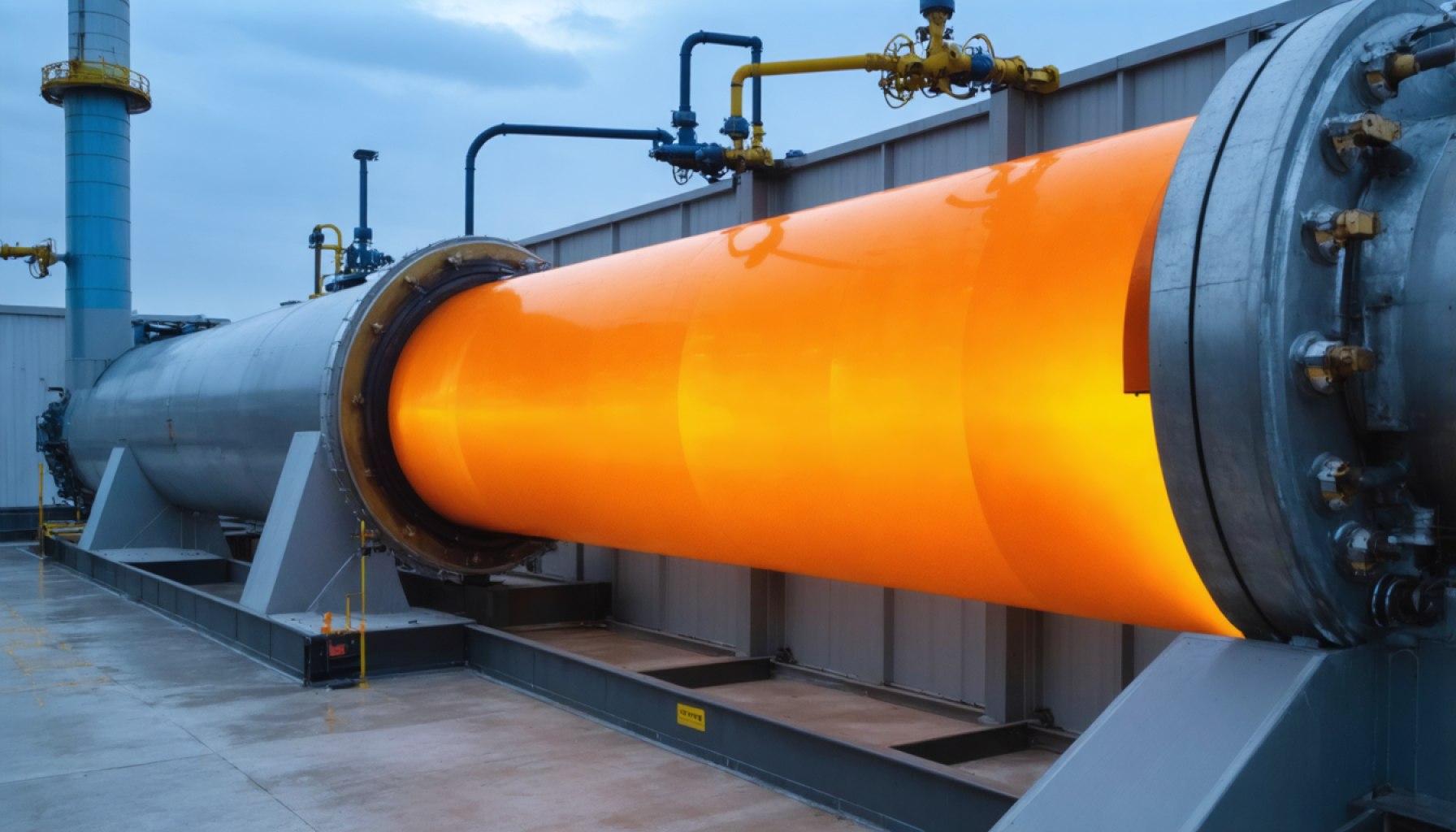- NewHydrogen, Inc.’s ThermoLoop™ technology revolutionizes green hydrogen production by eliminating costly intermediaries like electricity.
- ThermoLoop simplifies thermochemical processes, addressing traditional bottlenecks and reducing reliance on energy-intensive electrolyzers.
- At its core is a transformative AI-powered material that synchronizes chemical reactions, yielding cheaper and greener hydrogen.
- The technology is highly adaptable, utilizing heat from various sources like concentrated solar power, industrial waste, and geothermal energy.
- ThermoLoop’s versatility allows for hydrogen production in diverse environments, including remote and northern regions.
- This innovation supports the transition towards sustainability, offering affordable, scalable green hydrogen and reducing dependency on fossil fuels.
- By advancing ThermoLoop, NewHydrogen, Inc. fosters hope for a cleaner, sustainable future.
A daring shift is underway in the realm of renewable energy. NewHydrogen, Inc. is trailblazing with a pioneering technology called ThermoLoop™, which could redefine how we produce green hydrogen. Imagine a vast, luminous desert where the sun showers earth with limitless energy. Now, think of harnessing that energy without costly intermediaries like electricity—a vision made tangible by ThermoLoop.
Traditional hydrogen production, reliant on energy-intensive electrolyzers, burdens the pocket and planet. Current methods, steeped in heavy electricity use, inhibit our ability to transition to greener alternatives. Yet, the advent of ThermoLoop challenges this narrative by simplifying the complex thermochemical processes involved. This novel approach orchestrates reactions in an elegant dance of heat, negating the traditional bottlenecks of temperature imbalances.
At ThermoLoop’s heart lies a transformative material, crafted through groundbreaking AI-powered research. This innovation synchronizes multifaceted chemical reactions into an unbroken, efficient cycle. The result? Hydrogen that’s not just greener, but cheaper.
This isn’t just a dream confined to laboratories. ThermoLoop’s adaptability is its cornerstone; it embraces heat from concentrated solar power, industrial waste, and even geothermal sources. Such versatility enables hydrogen production in settings where conventional methods falter, opening avenues for application in smart grids and energy storage. Think of northern communities, where the sun’s absence is a harsh winter reality—here, hydrogen stands as a beacon of stored summer sunlight, ready to illuminate the darkest months.
In our quest for sustainability, ThermoLoop offers more than innovation; it provides hope. By making green hydrogen affordable and scalable, we edge closer to a world less tethered to fossil fuels, nurturing the dream of a cleaner, thriving future.
The Future of Hydrogen Production is Here: Exploring ThermoLoop™ Technology
ThermoLoop™ Technology: Revolutionizing Green Hydrogen Production
How ThermoLoop is Disrupting Traditional Methods
ThermoLoop™, developed by NewHydrogen, Inc., marks a paradigm shift in green hydrogen production. Unlike conventional electrolyzers that depend on large electricity inputs, ThermoLoop leverages thermochemical reactions driven by heat, drastically reducing the need for electrical energy. This system transitions smoothly through temperatures, avoiding common thermal imbalances in hydrogen production, thanks to its innovative AI-designed materials.
Real-World Applications and Industry Impact
ThermoLoop’s flexibility in sourcing heat—whether from concentrated solar power, industrial waste, or geothermal sources—positions it as a versatile fit for various environments. This adaptability enables the deployment of hydrogen production facilities in remote or less accessible areas, such as:
– Desert Regions: Continuous sunlight allows efficient solar heat utilization, perfectly suiting ThermoLoop’s needs.
– Industrial Parks: Harness waste heat from manufacturing processes, converting a byproduct into green hydrogen.
– Northern Climates: Use stored solar energy from summer months to generate essential hydrogen during sun-scarce winters.
Market Forecast & Industry Trends
The hydrogen production market is expected to grow tremendously, with predictions suggesting the industry’s valuation could reach over $300 billion by 2030, driven by the increasing demand for clean energy solutions (source: International Energy Agency, 2021). ThermoLoop’s cost-efficiency could accelerate this growth trajectory as it lowers the barrier for green hydrogen adoption.
Challenges and Limitations
While promising, ThermoLoop must navigate several challenges:
– Initial Capital Investment: Establishing infrastructure for thermochemical processes might require substantial upfront costs.
– Material Durability: The novel materials used in ThermoLoop must withstand high temperatures over extended periods.
– Policy and Regulation: Adoption could be hindered if government regulations or incentives lag behind technological advancements.
Security, Sustainability, and the Road Ahead
ThermoLoop offers a sustainable alternative, cutting carbon emissions and utilizing abundant heat sources. However, securing the technology in terms of operational safety and establishing standards for new materials are pivotal steps toward widespread adoption.
Actionable Recommendations for Stakeholders
1. Invest in Research and Development: Encourage ongoing advancements in ThermoLoop materials to enhance durability and efficiency.
2. Leverage Available Resources: Utilize local heat sources, optimizing existing infrastructure for immediate benefits.
3. Engage with Policy Makers: Work with governments to develop supportive policies and regulations to spur adoption.
4. Form Strategic Partnerships: Collaborate with industries and energy providers to integrate ThermoLoop technology within current systems, accelerating the shift to green energy.
For more information on renewable energy innovations, visit NewHydrogen.
By embracing ThermoLoop™, stakeholders can contribute to a cleaner, greener world, aligning with global sustainability goals and fostering economic growth through renewable energy advancements.


















